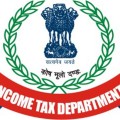March 07, 2016
CBDT vide it Circular No. 07/2016 dated March 07, 2016 (F. No. 225/2/2016/ITA.II) clarified the issue of taxation of consortium members. The tax authorities, in many cases have taken a position that such a consortium constituted an Association of Persons (‘AOP’) i.e. a separate entity for charging tax. To bring about consistency in approach while handling cases of consortium, the Central Board of Direct taxes has clarified that a consortium arrangement for executing EPC/Turnkey contracts which has the following attributes may not be treated as an AOP.
a. each member is independently responsible for executing its part of work through its own resources and also bears the risk of its scope of work i.e. there is a clear demarcation in the work and costs between the consortium member and each member incurs expenditure only in its specified area of work;
b. each member earns profit or incurs losses, based on performance of the contract falling strictly within its scope of work. However, consortium members may share contract price at gross level only to facilitate convenience in billing;
c. the men and materials used for any area of work are under the risk and control of respective consortium members;
d. the control and management of the consortium is not unified and common management is only for the inter-se coordination between the consortium members for administrative convenience;
Circular No. 07/2016
Government of India
Ministry of Finance
Department of Revenue
Central Board of Direct Taxes
North Block, New Delhi, the 7th March, 2016
Subject: Clarification regarding taxability of consortium members – reg.
A consortium of contractors is often formed to implement large infrastructure projects, particularly in Engineering, Procurement and Construction (‘EPC’) contracts and Turnkey Projects. The tax authorities, in many cases have taken a position that such a consortium constituted an Association of Persons (‘AOP’) i.e. a separate entity for charging tax. The claim of taxpayers, on the other hand, is contrary to this view. This has led to tax disputes particularly in those cases where each member of the consortium, although jointly and severally liable to the contractee, has a clear distinction and role in scope of work, responsibilities and liabilities of the consortium members.
2.The term AOP has not been specifically defined in the Income-tax Act, 1961 (‘Act’). The issue as to what would constitute an AOP was considered by the Apex Court in some cases. Although certain guidelines were prescribed in this regard, the Court opined that there is no formula of universal application so as to conclusively decide the existence of an AOP and it would rather depend upon the particular facts and circumstances of a case. In the specific context of the EPC contracts/Turnkey projects, there are several contrary ruling of various Courts on what constitutes an AOP.
3.The matter has been examined. With a view to avoid tax-disputes and to have consistency in approach while handling these cases, the Board has decided that a consortium arrangement for executing EPC/Turnkey contracts which has the following attributes may not be treated as an AOP.
a. each member is independently responsible for executing its part of work through its own resources and also bears the risk of its scope of work i.e. there is a clear demarcation in the work and costs between the consortium member and each member incurs expenditure only in its specified area of work;
b. each member earns profit or incurs losses, based on performance of the contract falling strictly within its scope of work. However, consortium members may share contract price at gross level only to facilitate convenience in billing;
c. the men and materials used for any area of work are under the risk and control of respective consortium members;
d. the control and management of the consortium is not unified and common management is only for the inter-se coordination between the consortium members for administrative convenience;
4.There may be other additional factors also which may justify that consortium is not an AOP and the same shall depend upon the specific facts and circumstances of a particular case, which need to be taken into consideration while taking a view in the matter.
5.It is further clarified that this Circular shall not be applicable in cases where all or some of the members of the consortium are Associated Enterprises within the meaning of section 92A of the Act. In such cases, the Assessing Officer will decide whether an AOP is formed or not keeping in view the relevant provisions of the Act and judicial jurisprudence on this issue.
6.The above may be brought to the notice of all for necessary compliance.
7.Hindi version to follow.
(F. No. 225/2/2016/ITA.II)
(Rohit Garg)
Deputy Secretary to the Government of India
Source: http://irsofficersonline.gov.in/Documents/OfficalCommunique/137201641725.pdf




